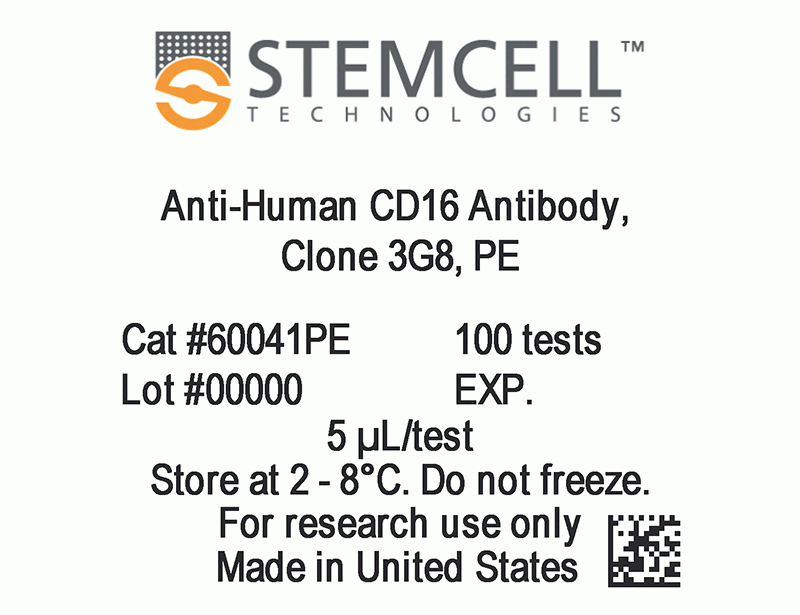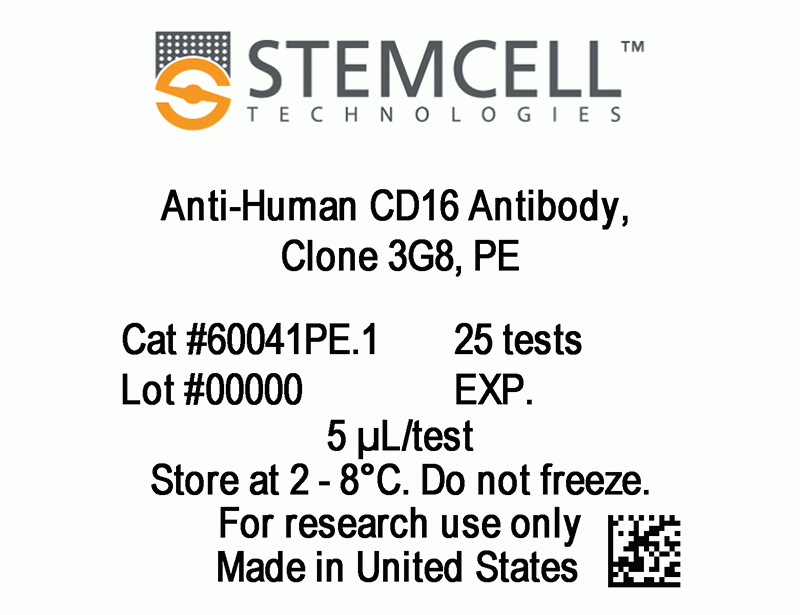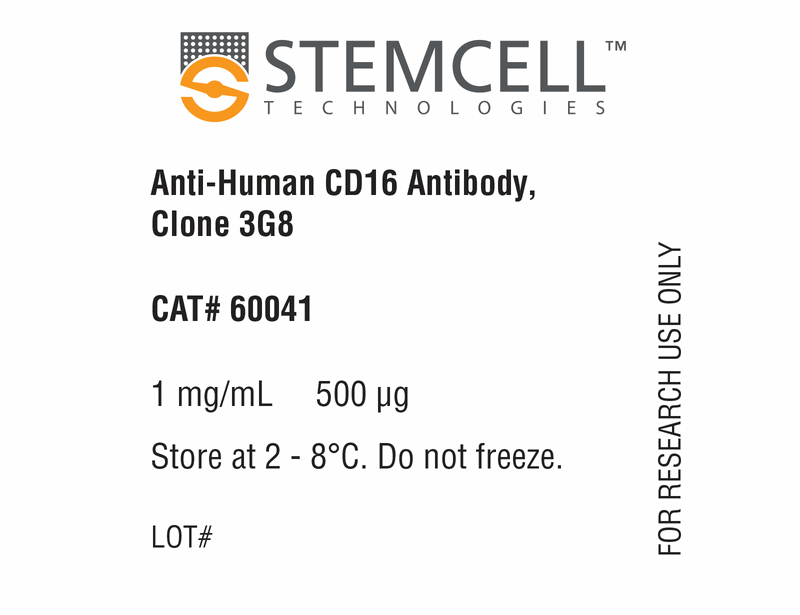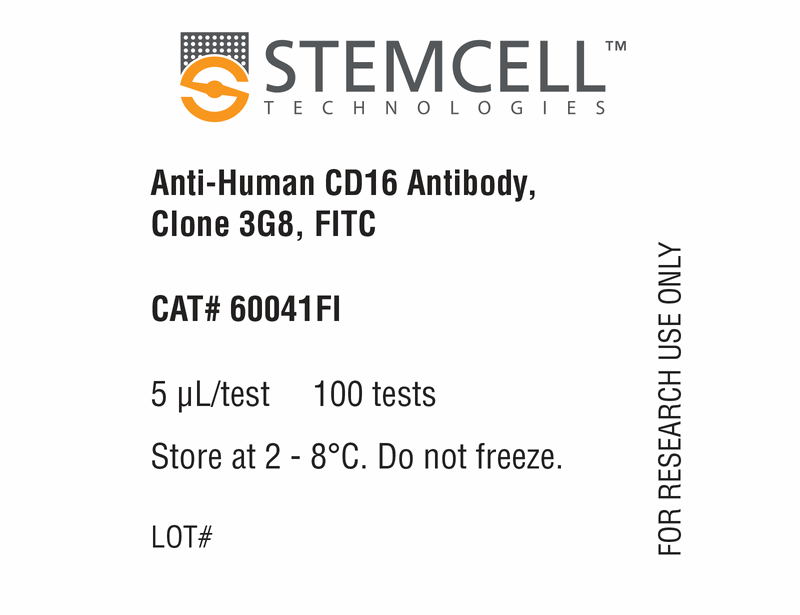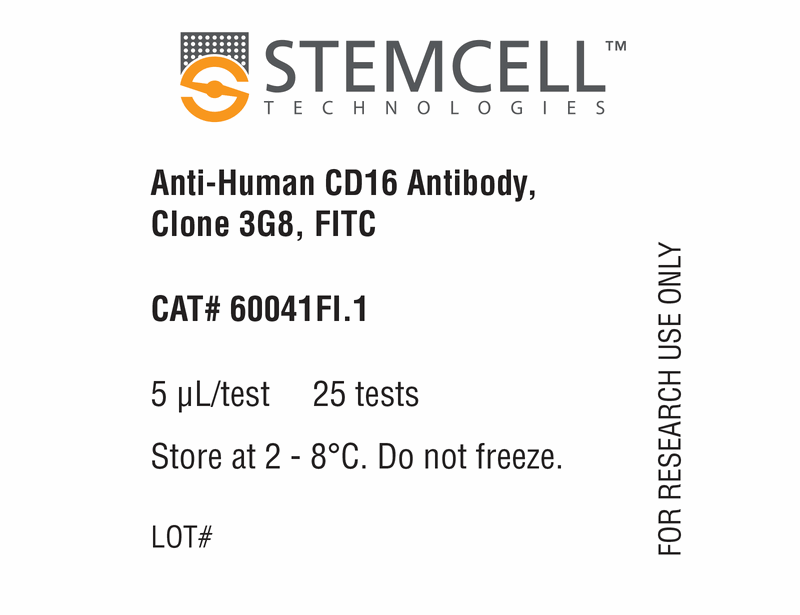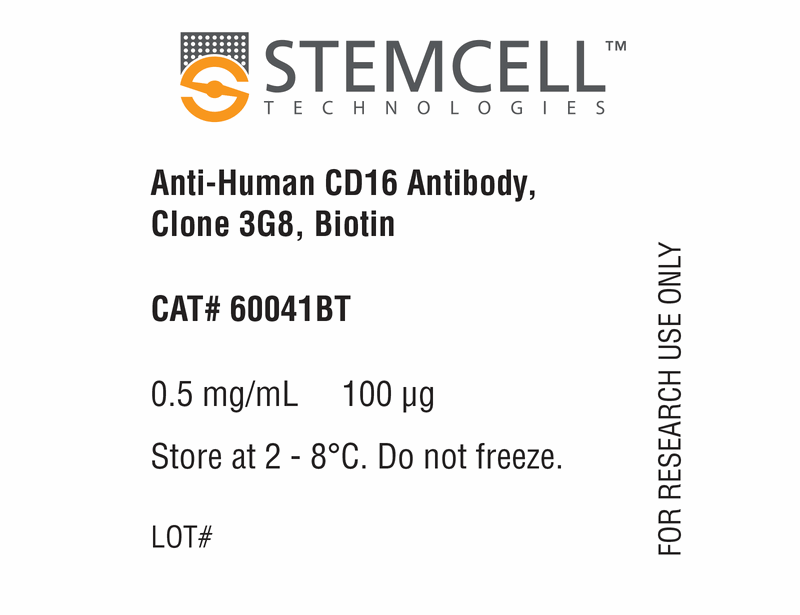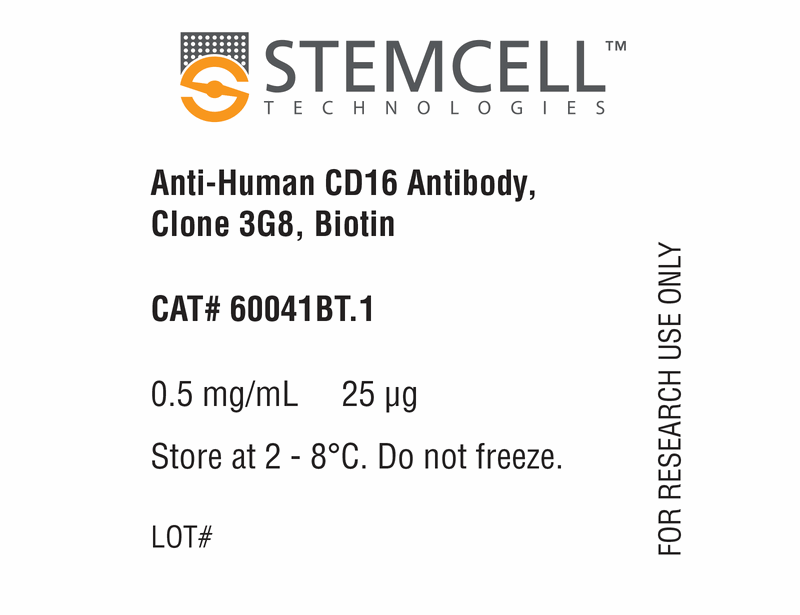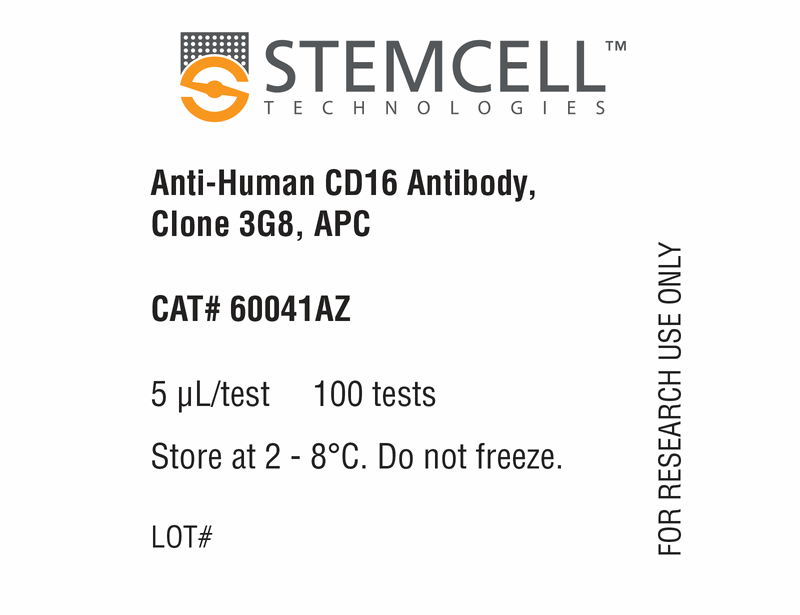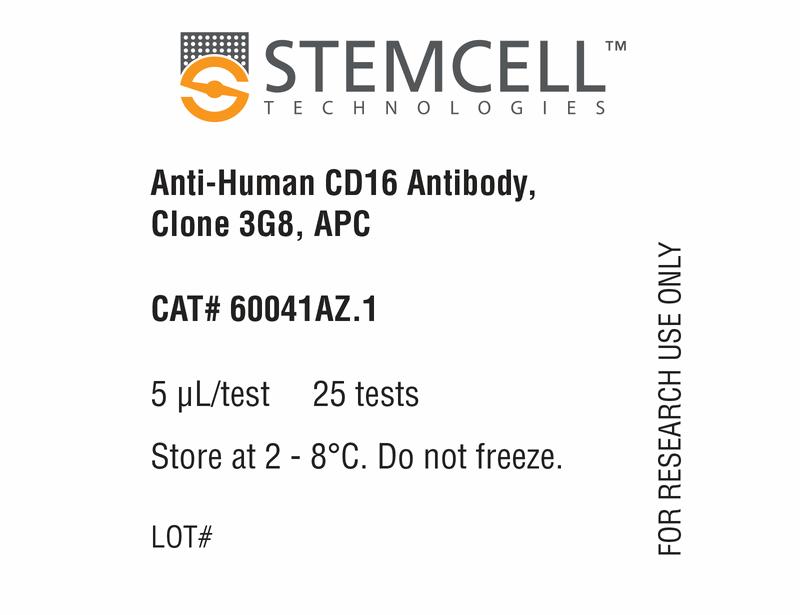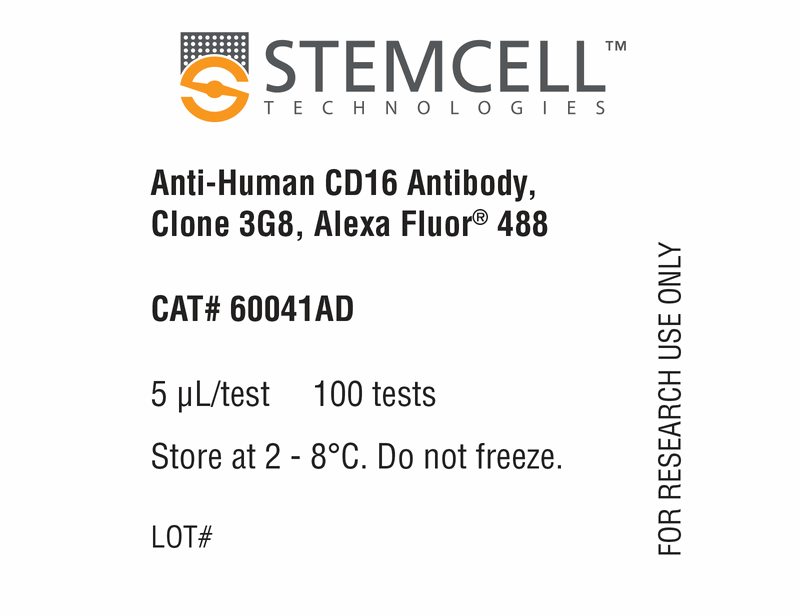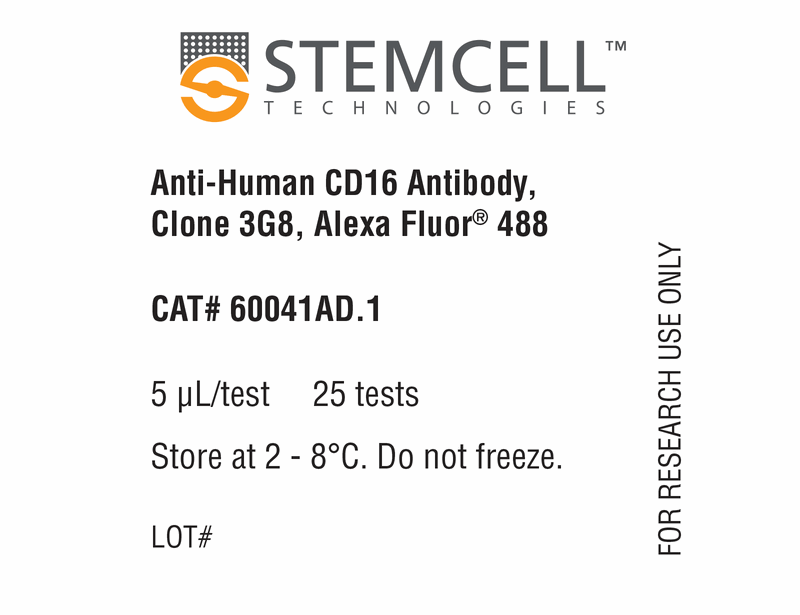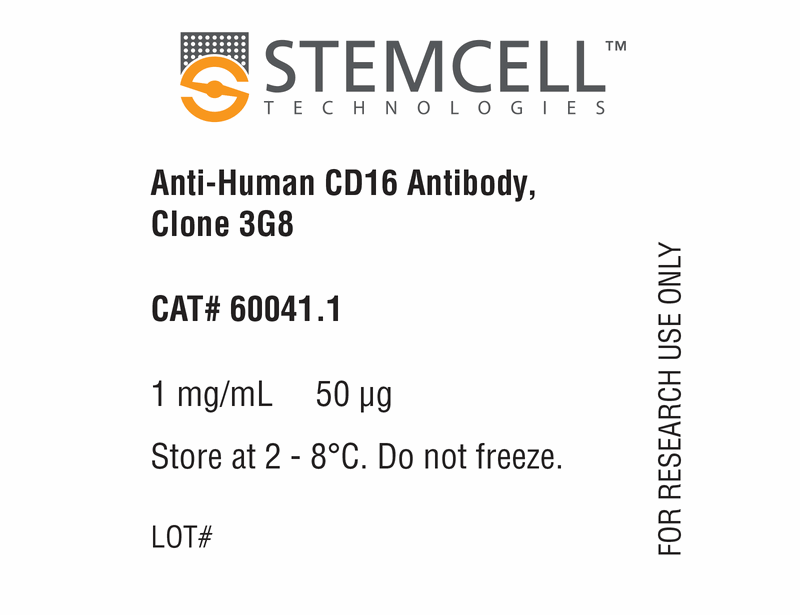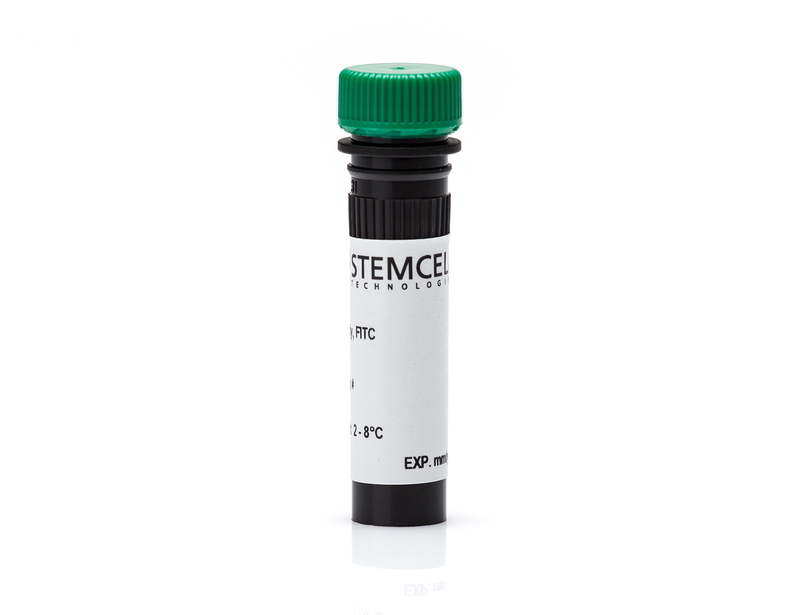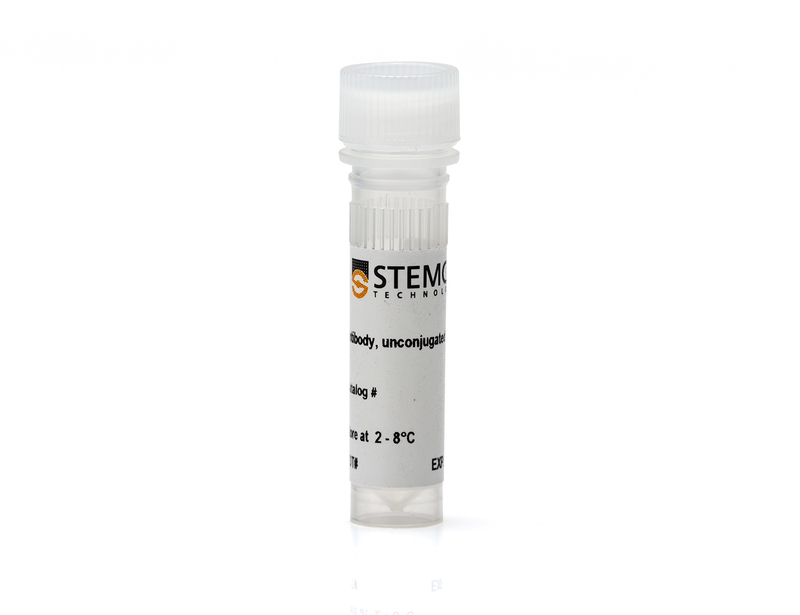Anti-Human CD16 Antibody, Clone 3G8
Data
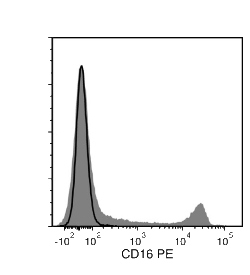
Figure 1. Data for Unconjugated
Flow cytometry analysis of human peripheral blood mononuclear cells (PBMCs) labeled with Anti-Human CD16 Antibody, Clone 3G8, followed by a rat anti-mouse IgG1 antibody, PE (filled histogram), or Mouse IgG1, kappa Isotype Control Antibody, Clone MOPC-21 (Catalog #60070), followed by a rat anti-mouse IgG1 antibody, PE (solid line histogram).
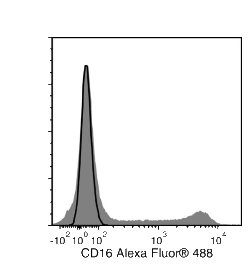
Figure 2. Data for Alexa Fluor® 488-Conjugated
Flow cytometry analysis of human peripheral blood mononuclear cells (PBMCs) labeled with Anti-Human CD16 Antibody, Clone 3G8, Alexa Fluor® 488 (filled histogram) or Mouse IgG1, kappa Isotype Control Antibody, Clone MOPC-21, Alexa Fluor® 488 (Catalog #60070AD) (solid line histogram).
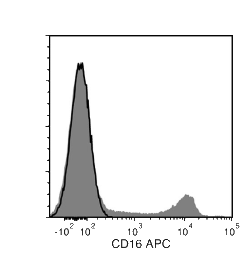
Figure 3. Data for APC-Conjugated
Flow cytometry analysis of human peripheral blood mononuclear cells (PBMCs) labeled with Anti-Human CD16 Antibody, Clone 3G8, APC (filled histogram) or Mouse IgG1, kappa Isotype Control Antibody, Clone MOPC-21, APC (Catalog #60070AZ) (solid line histogram).
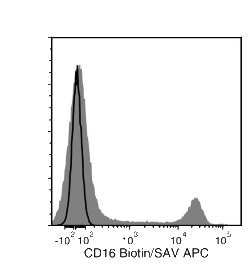
Figure 4. Data for Biotin-Conjugated
Flow cytometry analysis of human peripheral blood mononuclear cells (PBMCs) labeled with Anti-Human CD16 Antibody, Clone 3G8, Biotin, followed by streptavidin (SAV) APC (filled histogram), or Mouse IgG1, kappa Isotype Control Antibody, Clone MOPC-21, Biotin (Catalog #60070BT), followed by SAV APC (solid line histogram).
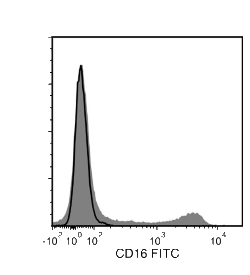
Figure 5. Data for FITC-Conjugated
Flow cytometry analysis of human peripheral blood mononuclear cells (PBMCs) labeled with Anti-Human CD16 Antibody, Clone 3G8, FITC (filled histogram) or Mouse IgG1, kappa Isotype Control Antibody, Clone MOPC-21, FITC (Catalog #60070FI) (solid line histogram).
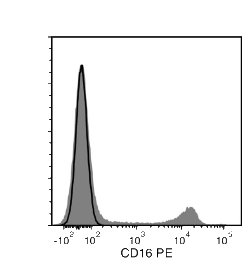
Figure 6. Data for PE-Conjugated
Flow cytometry analysis of human peripheral blood mononuclear cells (PBMCs) labeled with Anti-Human CD16 Antibody, Clone 3G8, PE (filled histogram) or Mouse IgG1, kappa Isotype Control Antibody, Clone MOPC-21, PE (Catalog #60070PE) (solid line histogram).

